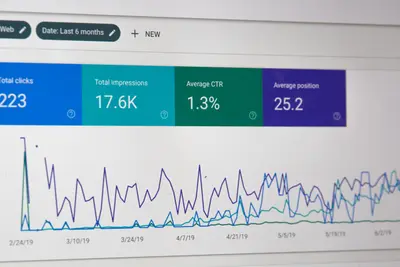🤖 Mastering Ansible Automation on AlmaLinux: Automate Everything Like a DevOps Wizard
Hey there, automation enthusiast! 🚀 Are you tired of logging into servers one by one to make the same changes? Ever wished you could manage hundreds of servers as easily as one? Well, let me introduce you to your new superpower - Ansible!
I still remember my life before Ansible… spending entire weekends updating servers manually, copying the same configurations everywhere. 😫 Then I discovered Ansible, and suddenly I could manage my entire infrastructure with simple YAML files! By the end of this guide, you’ll be automating tasks like a pro, and honestly, you’ll wonder how you ever survived without it!
🤔 Why is Ansible Important?
Ansible is like having an army of robot assistants! 🤖 Let me show you why it’s revolutionary:
The Magic of Ansible:
- 🚀 Agentless Architecture - No software to install on managed nodes
- 📝 Human-Readable YAML - Configuration as simple text files
- 🔄 Idempotent Operations - Run multiple times safely
- 🌍 Massive Scale - Manage thousands of servers simultaneously
- 🔐 Secure by Default - Uses SSH, no extra ports needed
- 📚 Huge Module Library - Thousands of pre-built automation tasks
- 🎯 Perfect State Management - Define desired state, Ansible makes it happen
- 💰 Free and Open Source - Enterprise features without the cost
🎯 What You Need
Before we start automating everything, let’s check our toolkit! 🛠️ Here’s what you’ll need:
Prerequisites:
- ✅ AlmaLinux 8 or 9 installed (control node)
- ✅ At least one target server to manage
- ✅ SSH access between servers configured
- ✅ Root or sudo access on all systems
- ✅ Python installed (usually pre-installed)
- ✅ Basic YAML understanding (I’ll teach you!)
- ✅ About 60 minutes of your time
- ✅ Excitement to automate everything! 🎉
📝 Step 1: Installing Ansible
Let’s get Ansible installed and ready to automate! 🎯 This is where your automation journey begins.
Install Ansible on Control Node:
# Update your system first - always start fresh!
sudo dnf update -y
# Install EPEL repository for extra packages
sudo dnf install epel-release -y
# Install Ansible and dependencies
sudo dnf install ansible ansible-core -y
# Install additional helpful tools
sudo dnf install python3-pip sshpass -y
# Verify Ansible installation
ansible --version
# Output: ansible [core 2.x.x] - Excellent! ✅
# Install ansible-lint for playbook validation
pip3 install ansible-lint --user
# Check Python version (Ansible requirement)
python3 --version
# Should be Python 3.6 or higherConfigure Ansible Settings:
# Create Ansible configuration directory
mkdir -p ~/ansible
cd ~/ansible
# Create ansible.cfg for project settings
cat > ansible.cfg << 'EOF'
[defaults]
# Inventory file location
inventory = ./inventory
# Disable host key checking (for labs only!)
host_key_checking = False
# Set default remote user
remote_user = ansible
# Increase connection timeout
timeout = 30
# Enable command warnings
command_warnings = True
# Pretty output
stdout_callback = yaml
# Speed up gathering facts
gathering = smart
# Parallel execution
forks = 10
[ssh_connection]
# Speed up SSH connections
ssh_args = -o ControlMaster=auto -o ControlPersist=60s
pipelining = True
EOF
echo "Ansible configured! 🎯"🔧 Step 2: Setting Up Inventory and SSH Access
Time to tell Ansible about your servers! 📋 This is your infrastructure map.
Create Inventory File:
# Create inventory file with your servers
cat > inventory << 'EOF'
# Ansible Inventory File
# Groups help organize servers by function
[webservers]
web1 ansible_host=192.168.1.101 ansible_user=ansible
web2 ansible_host=192.168.1.102 ansible_user=ansible
[databases]
db1 ansible_host=192.168.1.110 ansible_user=ansible
db2 ansible_host=192.168.1.111 ansible_user=ansible
[loadbalancers]
lb1 ansible_host=192.168.1.120 ansible_user=ansible
# Group all AlmaLinux servers
[almalinux:children]
webservers
databases
loadbalancers
# Variables for all AlmaLinux servers
[almalinux:vars]
ansible_python_interpreter=/usr/bin/python3
ansible_become=yes
ansible_become_method=sudo
EOF
# Test inventory
ansible-inventory --list -y
# Shows your server hierarchy in YAML formatSet Up SSH Key Authentication:
# Generate SSH key pair (if you don't have one)
ssh-keygen -t rsa -b 4096 -f ~/.ssh/ansible_key -N ""
# Create ansible user on all target servers
# Run this on each target server:
sudo useradd -m -s /bin/bash ansible
echo "ansible ALL=(ALL) NOPASSWD: ALL" | sudo tee /etc/sudoers.d/ansible
# Copy SSH key to all servers (from control node)
for server in 192.168.1.101 192.168.1.102 192.168.1.110; do
ssh-copy-id -i ~/.ssh/ansible_key.pub ansible@$server
done
# Test connectivity to all servers
ansible all -m ping
# Should see SUCCESS messages! 🎉
# web1 | SUCCESS => {
# "changed": false,
# "ping": "pong"
# }🌟 Step 3: Creating Your First Playbooks
Let’s write some automation magic! ✨ Playbooks are where Ansible shines.
Basic System Configuration Playbook:
# Create your first playbook
cat > site.yml << 'EOF'
---
# My First Ansible Playbook! 🎯
- name: Configure AlmaLinux Servers
hosts: almalinux
become: yes
tasks:
- name: Update all packages 📦
dnf:
name: "*"
state: latest
tags: updates
- name: Install essential packages 🛠️
dnf:
name:
- vim
- wget
- curl
- htop
- git
- firewalld
state: present
tags: packages
- name: Start and enable firewalld 🔥
systemd:
name: firewalld
state: started
enabled: yes
tags: firewall
- name: Configure timezone ⏰
timezone:
name: America/New_York
tags: timezone
- name: Create admin user 👤
user:
name: sysadmin
groups: wheel
shell: /bin/bash
create_home: yes
state: present
tags: users
- name: Set message of the day 📝
copy:
content: |
************************************************
* Welcome to {{ ansible_hostname }}! 🎉
* This server is managed by Ansible
* Last configured: {{ ansible_date_time.date }}
************************************************
dest: /etc/motd
tags: motd
EOF
# Run the playbook!
ansible-playbook site.yml
# Run only specific tags
ansible-playbook site.yml --tags packages,firewallWeb Server Setup Playbook:
# Create web server configuration playbook
cat > webserver.yml << 'EOF'
---
- name: Configure Web Servers 🌐
hosts: webservers
become: yes
vars:
doc_root: /var/www/html
http_port: 80
domain: example.com
tasks:
- name: Install Apache web server 🖥️
dnf:
name: httpd
state: present
- name: Create document root 📁
file:
path: "{{ doc_root }}"
state: directory
owner: apache
group: apache
mode: '0755'
- name: Create index.html 📄
template:
src: index.html.j2
dest: "{{ doc_root }}/index.html"
owner: apache
group: apache
mode: '0644'
- name: Configure Apache 🔧
template:
src: httpd.conf.j2
dest: /etc/httpd/conf/httpd.conf
backup: yes
notify: restart apache
- name: Open firewall for HTTP 🔓
firewalld:
service: http
permanent: yes
state: enabled
immediate: yes
- name: Start Apache service 🚀
systemd:
name: httpd
state: started
enabled: yes
handlers:
- name: restart apache
systemd:
name: httpd
state: restarted
EOF
# Create template for index.html
cat > index.html.j2 << 'EOF'
<!DOCTYPE html>
<html>
<head>
<title>Welcome to {{ ansible_hostname }}! 🎉</title>
</head>
<body>
<h1>🚀 Server: {{ ansible_hostname }}</h1>
<p>Managed by Ansible on {{ ansible_date_time.date }}</p>
<p>IP Address: {{ ansible_default_ipv4.address }}</p>
<p>OS: {{ ansible_distribution }} {{ ansible_distribution_version }}</p>
</body>
</html>
EOF
# Run the web server playbook
ansible-playbook webserver.yml✅ Step 4: Advanced Automation with Roles
Let’s organize our automation with roles! 🎭 This is professional-grade stuff.
Create a Database Role:
# Create role structure
mkdir -p roles/mariadb/{tasks,handlers,templates,files,vars,defaults}
# Create main task file
cat > roles/mariadb/tasks/main.yml << 'EOF'
---
# MariaDB Installation and Configuration Tasks
- name: Install MariaDB packages 💾
dnf:
name:
- mariadb-server
- mariadb
- python3-PyMySQL
state: present
- name: Start and enable MariaDB 🚀
systemd:
name: mariadb
state: started
enabled: yes
- name: Secure MariaDB installation 🔐
mysql_user:
name: root
host: "{{ item }}"
password: "{{ mysql_root_password }}"
login_unix_socket: /var/lib/mysql/mysql.sock
with_items:
- localhost
- 127.0.0.1
- ::1
- name: Remove anonymous users 🚫
mysql_user:
name: ''
host_all: yes
state: absent
login_user: root
login_password: "{{ mysql_root_password }}"
- name: Remove test database 🗑️
mysql_db:
name: test
state: absent
login_user: root
login_password: "{{ mysql_root_password }}"
- name: Create application database 📊
mysql_db:
name: "{{ app_database }}"
state: present
login_user: root
login_password: "{{ mysql_root_password }}"
- name: Create application user 👤
mysql_user:
name: "{{ app_user }}"
password: "{{ app_password }}"
priv: "{{ app_database }}.*:ALL"
state: present
login_user: root
login_password: "{{ mysql_root_password }}"
EOF
# Create defaults
cat > roles/mariadb/defaults/main.yml << 'EOF'
---
mysql_root_password: "SecureRootPass123!"
app_database: myapp
app_user: appuser
app_password: "AppPass456!"
EOF
# Create playbook using the role
cat > database.yml << 'EOF'
---
- name: Deploy MariaDB Database Servers
hosts: databases
become: yes
roles:
- mariadb
EOF
# Run the database playbook
ansible-playbook database.yml🎮 Quick Examples
Let’s see Ansible in action with real-world scenarios! 🚀
Example 1: Security Hardening Playbook
cat > security-hardening.yml << 'EOF'
---
- name: Security Hardening for AlmaLinux 🛡️
hosts: almalinux
become: yes
tasks:
- name: Disable root SSH login 🔒
lineinfile:
path: /etc/ssh/sshd_config
regexp: '^PermitRootLogin'
line: 'PermitRootLogin no'
notify: restart sshd
- name: Configure fail2ban 🚫
block:
- name: Install fail2ban
dnf:
name: fail2ban
state: present
- name: Configure fail2ban for SSH
copy:
content: |
[sshd]
enabled = true
port = ssh
logpath = %(sshd_log)s
maxretry = 3
bantime = 3600
dest: /etc/fail2ban/jail.local
- name: Start fail2ban
systemd:
name: fail2ban
state: started
enabled: yes
- name: Set up automatic updates 🔄
dnf:
name: dnf-automatic
state: present
- name: Configure automatic updates
lineinfile:
path: /etc/dnf/automatic.conf
regexp: '^apply_updates'
line: 'apply_updates = yes'
- name: Enable automatic updates timer
systemd:
name: dnf-automatic.timer
state: started
enabled: yes
handlers:
- name: restart sshd
systemd:
name: sshd
state: restarted
EOF
# Run security hardening
ansible-playbook security-hardening.yml
echo "Security hardening complete! 🔐"Example 2: Application Deployment Playbook
cat > deploy-app.yml << 'EOF'
---
- name: Deploy Node.js Application 🚀
hosts: webservers
become: yes
vars:
app_name: myapp
app_port: 3000
app_dir: /opt/{{ app_name }}
github_repo: https://github.com/example/myapp.git
tasks:
- name: Install Node.js and npm 📦
dnf:
name:
- nodejs
- npm
- git
state: present
- name: Create app directory 📁
file:
path: "{{ app_dir }}"
state: directory
owner: "{{ ansible_user }}"
group: "{{ ansible_user }}"
- name: Clone application from Git 🔄
git:
repo: "{{ github_repo }}"
dest: "{{ app_dir }}"
version: main
become_user: "{{ ansible_user }}"
- name: Install npm dependencies 📚
npm:
path: "{{ app_dir }}"
state: present
become_user: "{{ ansible_user }}"
- name: Create systemd service 🎯
template:
src: app.service.j2
dest: /etc/systemd/system/{{ app_name }}.service
- name: Start application service 🚀
systemd:
name: "{{ app_name }}"
state: started
enabled: yes
daemon_reload: yes
- name: Configure nginx reverse proxy 🔄
template:
src: nginx-app.conf.j2
dest: /etc/nginx/conf.d/{{ app_name }}.conf
notify: reload nginx
handlers:
- name: reload nginx
systemd:
name: nginx
state: reloaded
EOF
echo "Application deployment playbook ready! 🎊"Example 3: Backup Automation
cat > backup-automation.yml << 'EOF'
---
- name: Automated Backup System 💾
hosts: all
become: yes
vars:
backup_dir: /backup
retention_days: 7
tasks:
- name: Create backup directory 📁
file:
path: "{{ backup_dir }}"
state: directory
mode: '0755'
- name: Create backup script 📝
copy:
content: |
#!/bin/bash
DATE=$(date +%Y%m%d_%H%M%S)
# Backup important directories
tar -czf {{ backup_dir }}/etc_${DATE}.tar.gz /etc
tar -czf {{ backup_dir }}/home_${DATE}.tar.gz /home
# Backup databases if MariaDB exists
if systemctl is-active mariadb &>/dev/null; then
mysqldump --all-databases > {{ backup_dir }}/databases_${DATE}.sql
gzip {{ backup_dir }}/databases_${DATE}.sql
fi
# Clean old backups
find {{ backup_dir }} -type f -mtime +{{ retention_days }} -delete
echo "Backup completed at $(date)" >> {{ backup_dir }}/backup.log
dest: /usr/local/bin/ansible-backup.sh
mode: '0755'
- name: Schedule backup with cron 📅
cron:
name: "Ansible automated backup"
minute: "0"
hour: "2"
job: "/usr/local/bin/ansible-backup.sh"
user: root
- name: Run initial backup 🚀
command: /usr/local/bin/ansible-backup.sh
args:
creates: "{{ backup_dir }}/backup.log"
EOF
# Run backup automation
ansible-playbook backup-automation.yml
echo "Backup automation configured! 💾"🚨 Fix Common Problems
Don’t worry if something doesn’t work right away! Here are solutions:
Problem 1: SSH Connection Failed
# Check SSH connectivity
ssh ansible@target-server
# If password prompt appears, SSH key not working
# Re-copy SSH key
ssh-copy-id -i ~/.ssh/ansible_key.pub ansible@target-server
# Check SSH config
ansible -m ping target-server -vvv
# Shows detailed connection debugging
# Fix host key verification issues
export ANSIBLE_HOST_KEY_CHECKING=False
# Or add to ansible.cfg permanently
# Test with explicit SSH key
ansible all -m ping --private-key ~/.ssh/ansible_keyProblem 2: Privilege Escalation Failed
# Check sudo configuration on target
ssh ansible@target-server
sudo -l # Should show NOPASSWD
# Fix sudoers file
echo "ansible ALL=(ALL) NOPASSWD: ALL" | sudo tee /etc/sudoers.d/ansible
# Test privilege escalation
ansible target-server -m command -a "whoami" --become
# Should return: root
# Use different escalation method
ansible-playbook site.yml --become-method=su --ask-become-passProblem 3: Module Not Found
# List available modules
ansible-doc -l | grep module_name
# Install missing Python dependencies
pip3 install pymysql # For MySQL modules
pip3 install psycopg2 # For PostgreSQL
# Check module documentation
ansible-doc dnf # Shows module usage
# Update Ansible to get latest modules
sudo dnf update ansible-core
# Install ansible collections
ansible-galaxy collection install community.general📋 Simple Commands Summary
Your Ansible command cheat sheet! 📚 Keep this handy:
| Task | Command | What It Does |
|---|---|---|
| Test Connection | ansible all -m ping | Ping all servers 🏓 |
| Run Playbook | ansible-playbook site.yml | Execute playbook 🚀 |
| Check Syntax | ansible-playbook site.yml --syntax-check | Validate YAML ✅ |
| Dry Run | ansible-playbook site.yml --check | Preview changes 👀 |
| List Hosts | ansible all --list-hosts | Show inventory 📋 |
| Gather Facts | ansible hostname -m setup | Get system info 📊 |
| Run Command | ansible all -a "uptime" | Execute command 💻 |
| Install Role | ansible-galaxy install role_name | Get role 📦 |
| Limit Hosts | ansible-playbook site.yml --limit webservers | Target specific 🎯 |
| Use Tags | ansible-playbook site.yml --tags packages | Run tagged tasks 🏷️ |
| Verbose Mode | ansible-playbook site.yml -vvv | Debug output 🔍 |
| Check Variables | ansible hostname -m debug -a "var=ansible_os_family" | Show vars 📝 |
💡 Tips for Success
Here are my pro tips for Ansible mastery! 🎯
Best Practices:
- 📝 Use version control - Keep playbooks in Git
- 🏷️ Tag everything - Makes selective runs easy
- 🔐 Encrypt secrets - Use ansible-vault for passwords
- 📚 Create reusable roles - Don’t repeat yourself
- 🧪 Test in staging first - Never test in production
- 📖 Document variables - Future you will thank you
- 🎯 Keep it simple - Start small, grow gradually
- 🔄 Make idempotent - Safe to run multiple times
Performance Tips:
- ⚡ Use pipelining - Reduces SSH overhead
- 🚀 Increase forks - Parallel execution
- 📊 Cache facts - Don’t gather repeatedly
- 🎯 Limit scope - Target specific hosts
- 💾 Use local actions - When possible
- 🔧 Optimize loops - Use batch operations
🏆 What You Learned
Amazing work! Look at what you’ve mastered! 🎊
Your Achievements:
- ✅ Installed and configured Ansible
- ✅ Set up inventory management
- ✅ Created powerful playbooks
- ✅ Organized code with roles
- ✅ Automated system configuration
- ✅ Deployed applications automatically
- ✅ Implemented security hardening
- ✅ Set up backup automation
- ✅ Learned troubleshooting techniques
- ✅ Became an automation expert!
🎯 Why This Matters
Your Ansible skills are transforming how you manage infrastructure! 🌟
With Ansible mastery, you can now:
- 🚀 Manage thousands of servers - As easily as one
- ⏰ Save countless hours - Automate repetitive tasks
- 🔒 Ensure consistency - Same config everywhere
- 📝 Document infrastructure - Code is documentation
- 🎯 Deploy faster - From hours to minutes
- 🛡️ Improve security - Apply patches instantly
- 💰 Reduce costs - Less manual work needed
- 🌟 Scale effortlessly - Growth is just more YAML
Remember when you had to SSH into each server manually? Now you’re orchestrating entire data centers with simple playbooks! You’ve evolved from a server administrator to an infrastructure conductor. That’s absolutely incredible! 🌟
Keep automating, keep learning, and most importantly, enjoy your newfound automation superpowers! 🦸♂️
Happy automating, and welcome to the world of infrastructure as code! 🙌
P.S. - Don’t forget to share your coolest playbooks with the community. We all learn from each other! ⭐




